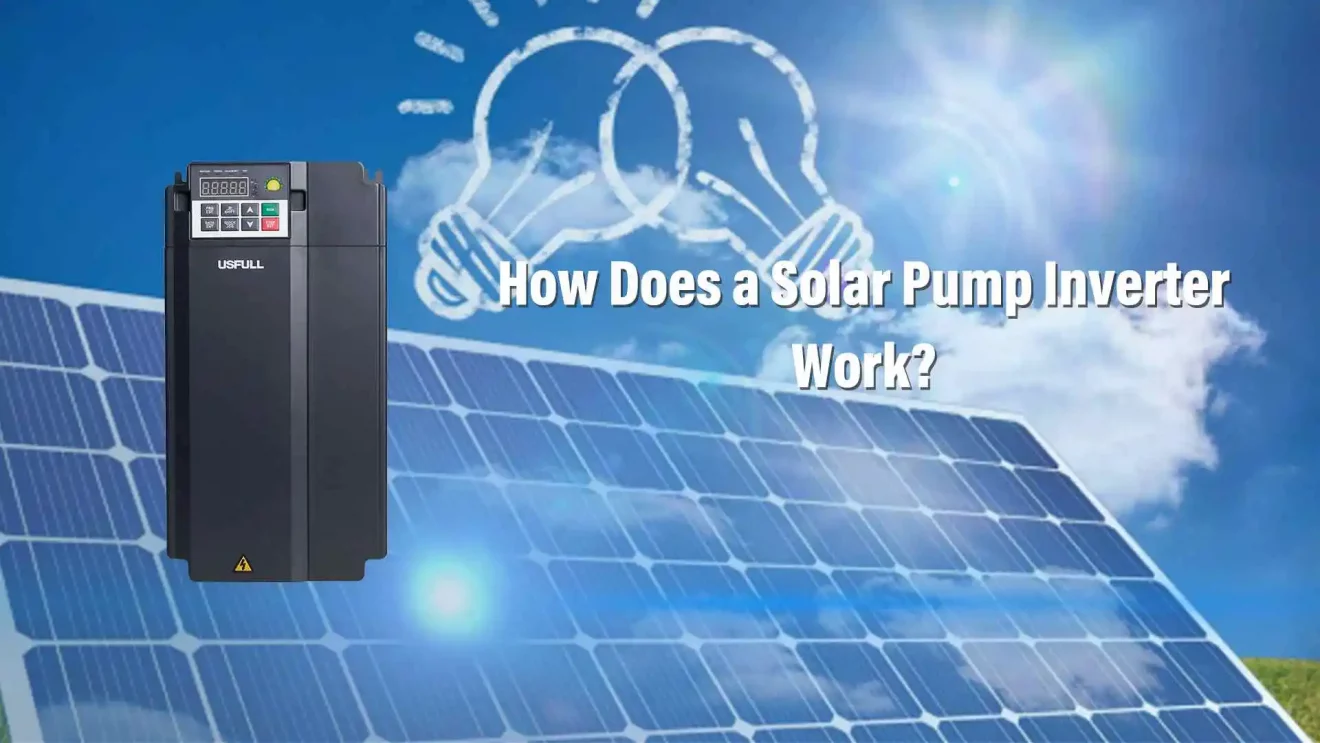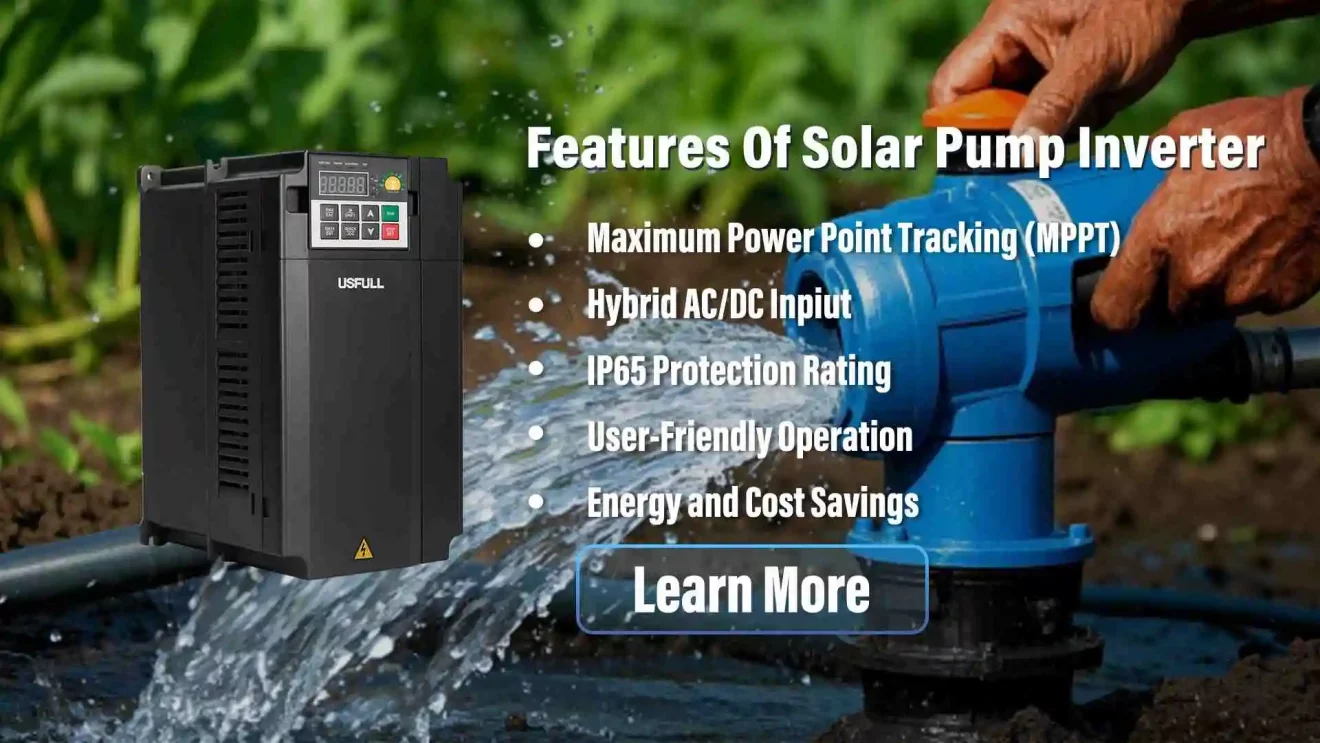If your solar water pump inverter can’t work properly, your entire water system may fail, leading to irrigation loss or water shortages. But with the right solar pump inverter, you can ensure reliable, efficient water delivery every day.
A solar pump inverter converts DC electricity from solar panels into AC power, enabling efficient operation of solar water pump systems for irrigation, drinking water, or wastewater management.
Want to understand the exact working principle of a solar pump inverter and why it matters? Keep reading to unlock key insights that will boost your solar projects.
What Is a Solar Pump Inverter?
A solar pump inverter is a specialized device designed to convert the direct current (DC) electricity generated by solar photovoltaic (PV) panels into alternating current (AC) electricity. This AC electricity is then used to drive a solar water pump inverter system, which delivers water for applications such as agriculture, livestock, village water supply, greenhouse management, or wastewater treatment.
Without the inverter, the DC power from the panels cannot operate standard AC pumps. A solar pump inverter also optimizes the system’s energy use by matching the pump’s operating speed with the available solar power, ensuring the highest efficiency and longest system lifespan.
How Does a Solar Pump Inverter Work?
The working process of a solar water pump inverter can be broken down into several key steps:
- Solar Panels Capture Sunlight— The solar panels absorb sunlight and convert it into DC electricity.
- MPPT Controller Optimizes Power— The inverter’s built-in Maximum Power Point Tracking (MPPT) controller constantly adjusts the voltage and current to draw the maximum power from the solar panels.
- DC to AC Conversion— The inverter converts the optimized DC power into AC power, which matches the voltage and frequency required by the water pump.
Pump Operation — The AC power is supplied to the solar water pump, driving water from a source (like a well or reservoir) to the desired destination, whether it’s an irrigation system, storage tank, or filtration unit.
Applications of Solar Pump Inverters
Solar pump inverters are used in a variety of industries and sectors, making them one of the most versatile tools in renewable energy:
- Agricultural Irrigation— Farmers use solar pump inverter systems to irrigate crops, even in remote areas without grid access. This not only improves yields but reduces energy costs.
- Drinking Water Supply— In rural or off-grid communities, solar water pump inverter systems provide a reliable source of clean drinking water without relying on diesel generators or costly grid connections.
- Greenhouse Management— In greenhouses, solar pump inverters help circulate water for cooling or heating systems, keeping environmental conditions optimal for plant growth.
- Wastewater Treatment— Solar pump inverters power treatment pumps, supporting environmental cleanup and reducing reliance on fossil fuels.
- Livestock Watering — Farmers can use solar-powered pump systems to deliver water to livestock in areas where utility power is unavailable.
Advantages of Using a Solar Pump Inverter
There are several key benefits to investing in a high-quality solar water pump inverter:
- Energy Efficiency— With MPPT technology, solar pump inverters maximize the energy harvested from the sun, reducing waste and lowering operational costs.
- Environmental Benefits— Using a solar pump inverter reduces greenhouse gas emissions and decreases dependence on fossil fuels.
- Off-Grid Capability— Solar pump systems work in remote areas where grid electricity is inaccessible or unreliable, ensuring water supply under almost any conditions.
- Low Maintenance— Compared to diesel-powered pumps, solar water pump inverter systems have fewer moving parts, which reduces wear and maintenance needs.
- Smart Monitoring — Many solar pump inverters now feature remote monitoring and control, allowing users to track performance, identify issues, and make adjustments in real time.
What Types of Solar Pump Inverters Are Available?
Different projects call for different types of solar water pump inverters:
- AC Solar Pump Inverter— Converts DC from the panels into standard AC power for conventional water pumps.
- DC Solar Pump Inverter— Used when the system uses a DC pump, eliminating the need for AC conversion and improving efficiency.
- Hybrid Solar Pump Inverter— Combines solar power with backup grid or generator input to ensure continuous operation even when solar energy is low, especially useful in critical water supply systems.
Each type offers specific benefits depending on the project’s scale, location, and energy requirements.
How Do You Choose the Right Solar Pump Inverter?
Selecting the best solar pump inverter for your project involves considering several key factors:
✅ Pump Type and Power Rating — Make sure the inverter matches the voltage, frequency, and power requirements of the connected water pump.
✅ Solar Panel Configuration — Check that the inverter is compatible with the total voltage and current supplied by your solar array.
✅ Application Needs — Whether you need a simple irrigation setup or a more advanced system with backup power, your inverter choice matters.
✅ Environmental Conditions — Ensure the inverter is designed for outdoor use, with suitable protection against dust, moisture, and temperature extremes.
✅ Certification and Warranty — Always look for solar pump inverters certified to international standards like CE, IEC, or TUV, backed by reliable warranties and technical support.
A solar pump inverter is more than just a power converter — it’s the brain of your solar water system, ensuring every drop of solar energy is put to productive use. At USFULL, we are proud to deliver certified, customizable, and efficient solar water pump inverter solutions to clients in over 90 countries.





